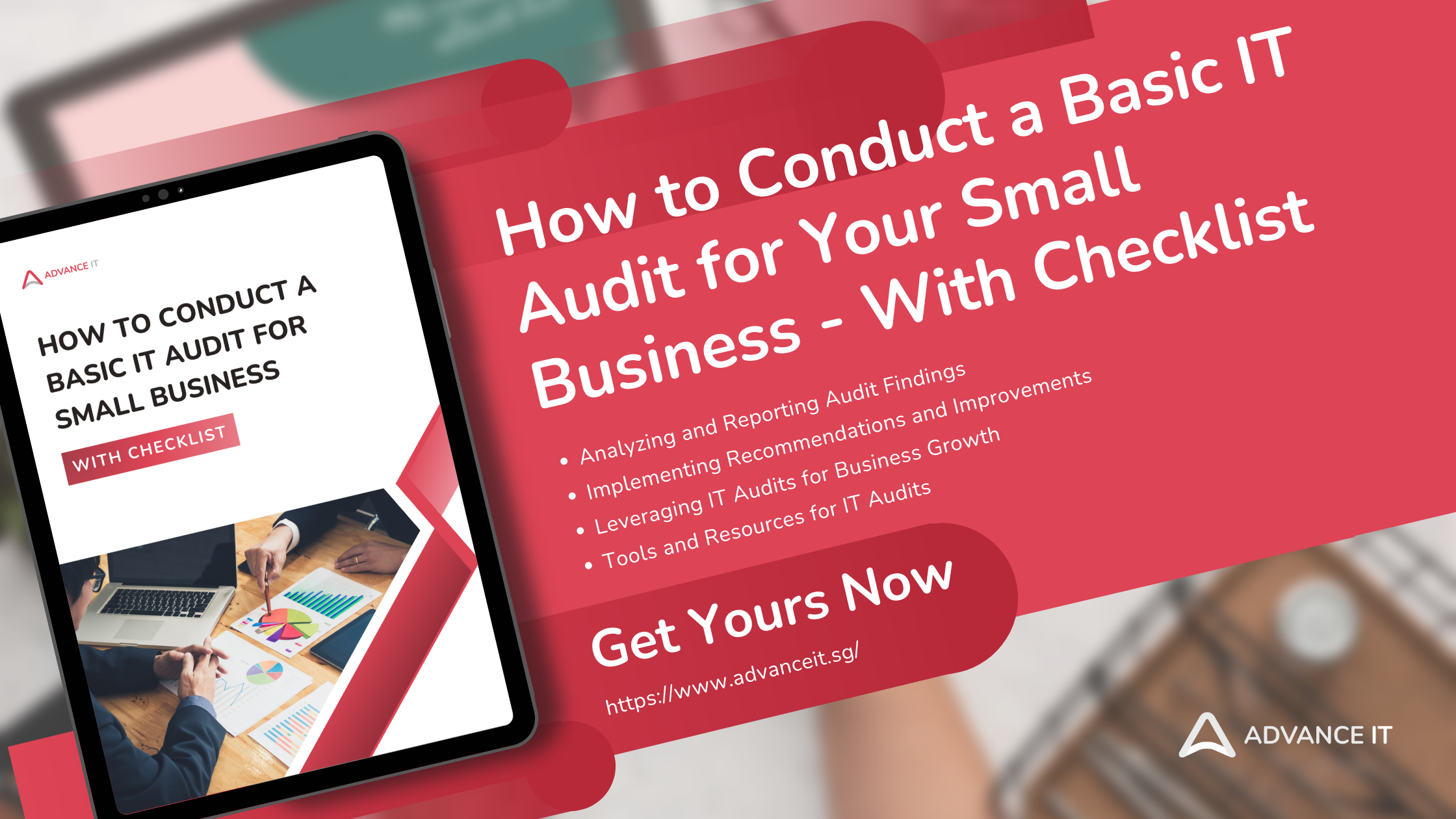Ebook | How to Conduct a Basic IT Audit for Your Small Business - With Checklist
Overview of Ebook | How to Conduct a Basic IT Audit for Your Small Business - With Checklist
An IT audit thoroughly examines a business’s information technology infrastructure, including its policies, operations, and controls. The goal is to assess whether IT systems are secure, reliable, and functioning effectively to support business operations.
For small businesses, IT audits are essential to identify potential vulnerabilities, ensure regulatory compliance, and optimize the use of IT resources. Regular audits help to prevent costly security breaches, maintain data integrity, and support informed decision-making.
Many small businesses believe that IT audits are only necessary for large corporations or that they require significant investment and technical expertise. This eBook will dispel these myths, showing that even basic IT audits can provide substantial value to small businesses without being overly complex or expensive.
Purpose of the eBook
This eBook is designed to guide small business owners and managers through the process of conducting a basic IT audit. It will break down each step in a practical, easy-to-understand manner, ensuring that even those with limited IT experience can follow along.
By the end of this eBook, you’ll be equipped with the knowledge to identify vulnerabilities, optimize your IT infrastructure, enhance cybersecurity, and ultimately strengthen your business operations.
SIGN UP TO READ FULL E-BOOK
Introduction
Overview of IT Auditing
Definition of an IT audit.
Importance of conducting regular IT audits in small businesses.
Common misconceptions about IT audits.
Purpose of the eBook
Guide small business owners and managers through the process of conducting a basic IT audit.
Empower SMBs to identify vulnerabilities, optimize IT resources, and enhance security.
Chapter 1: Understanding the Basics of IT Audits
What is an IT Audit?
Definition and key objectives.
Types of IT audits: security, compliance, operational, and financial.
Why IT Audits are Crucial for Small Businesses
Common Challenges in IT Audits
Chapter 2: Preparing for an IT Audit
Defining the Scope of the Audit
Determining what areas of your IT infrastructure to audit.
Prioritizing critical systems and data.
Setting clear objectives and outcomes.
Assembling the Audit Team
Identifying internal or external auditors.
Roles and responsibilities within the team.
Importance of involving stakeholders from different departments.
Gathering Necessary Documentation
Collecting IT policies and procedures.
Inventorying hardware and software assets.
Documenting network diagrams and system configurations.
Chapter 3: Conducting the IT Audit
Step 1: Review IT Governance and Policies
Step 2: Hardware and Software Inventory
Step 3: Network and Security Assessment
Step 4: Data Management and Backup Procedures
Step 5: User Access and Permissions Review
Chapter 4: Analyzing and Reporting Audit Findings
Interpreting the Results
Creating an IT Audit Report
Presenting Findings to Stakeholders
Chapter 5: Implementing Recommendations and Improvements
Developing an Action Plan
Addressing Security Vulnerabilities
Optimizing IT Resources
Establishing Ongoing Audit Practices
Chapter 6: Leveraging IT Audits for Business Growth
Aligning IT with Business Goals
Creating a Culture of Continuous Improvement
Case Studies: Success Stories from Small Businesses
Real-world examples of SMBs that benefited from regular IT audits.
Lessons learned and best practices.
Chapter 7: Tools and Resources for IT Audits
Recommended IT Audit Tools
Overview of software solutions for conducting audits.
Tools for network analysis, asset management, and security assessment.
Free vs. paid tools: pros and cons.
Additional Resources
Templates for IT audit checklists and reports.
Online courses and certifications in IT auditing.
Relevant industry standards and frameworks (e.g., ISO, NIST).






